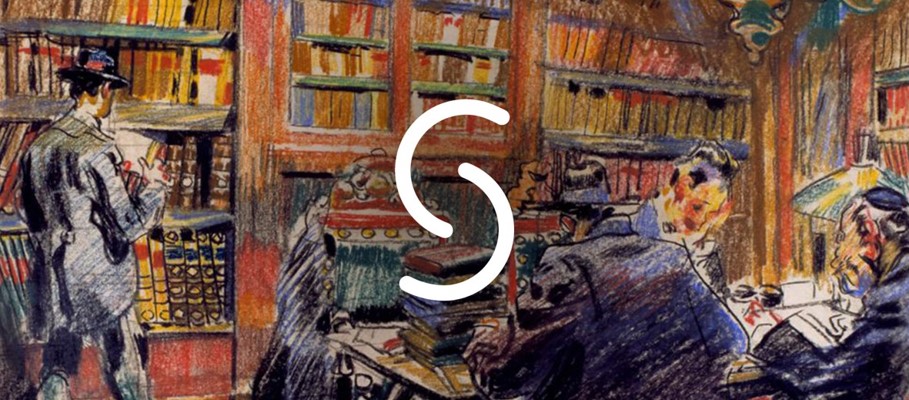Archivio Storico Comunale; Congregazione di carità: Fr. Ms. ebr.
Item
-
Country
-
IT
-
Name of institution (English)
-
State Archives Section of Cesena
-
Language of name of institution
-
ita
-
Contact information: postal address
-
Via Montalti 4, 47521 Cesena
-
Contact information: phone number
-
0039 0547 610754
-
Contact information: email
-
as-fc.sezionecesena@beniculturali.it
-
Reference number
-
ASFC, sezione Cesena, Archivio Storico Comunale
ASFC, sezione Cesena, Congregazione di carità
-
Type of reference number
-
Archival reference number
-
Title (English)
-
Municipal Historical Archive of Cesena; Congregation of Charity: fragments of Hebrew manuscripts
-
Title (official language of the state)
-
Archivio Storico Comunale; Congregazione di carità: Fr. Ms. ebr.
-
Language of title
-
ita
-
Creator / accumulator
-
Comune di Cesena
Ospedali del territorio di Cesena
-
Date(s)
-
1297/1933
-
Date note
-
Archivio Storico Comunale (1375/1805)
Congregazione di carità (1297/1933)
-
Language(s)
-
heb
-
ita
-
lat
-
Extent
-
2075 storage units; 253 parchments (Archivio Storico Comunale)
1789 storage units; 296 parchments (Congregazione di carità)
-
Type of material
-
Textual Material
-
Physical condition
-
Satisfactory
-
Scope and content
-
Within the rich documentary heritage preserved in the Cesena Section of the State Archives of Forlí, two fonds — the Archivio storico comunale (Historical Municipal Archives of Cesena) and the Congregazione di carità, Ospedali Istituzioni riunite (Congregation of charity, Hospitals Joint Institutions) — preserve two fragments of Hebrew manuscripts from the Sephardic context. They are the following:
ASFC, sezione Cesena, Archivio Storico Comunale, reg. 1751, aa. 1577-1578: fragments of a 13th or 14th-century Bible (Psalms 73, 1-22; 83, 16-85) written in Sephardic square script.
ASFC, sezione Cesena, Congregazione di carità, reg. A-III-49, Ospedale del SS Crocifisso, Libro delle entrate e uscite, aa. 1566-1567: fragment of a 13th or 14th-century Bible (Proverbs, Ruth) written in Sephardic square script.
-
(source: Perani, Mauro, and Enrica Sagradini. 2012. Inventari dei manoscritti delle biblioteche d’Italia. Vol. 114. Frammenti ebraici negli archivi di Cesena, Faenza, Forlì, Imola, Rimini e Spoleto. Vol. Volume CXIV. Firenze: L.S. Olschki)
-
Archival history
-
The State Archives Section of Cesena was established in 1970. Back then, it occupied part of the former Franciscan convent as its headquarters. One of the main collections preserved in this section is the municipality of Cesena fonds. It comprises documentation from the 14th century, although records prior to 1377 and those dating from Malatesta rule (1379-1465) are rather scarce. From the second half of the 15th century, conservation became much more stable. Around 1750, the first partial arrangement of the archive was carried out, followed by two other efforts to organise the documentation in the 19th century. Only in more recent years, after the transference of the fonds to the headquarters of the State Archives, has there been a more complete cataloguing of the fonds. It was then divided into six distinct collections, including the Chancellery registers, where fragments of Hebrew manuscripts have been found.
Another noteworthy collection of the Cesena section is the Congregazione di carità fonds, which gathers documents produced by various charities and hospitals established in the city. Among these, the six hospitals series include the documentation of the Ospedale del SS Crocifisso, where fragments of Jewish parchments have been found.
-
(source: Guida agli Archivi di Stato – Forlì)
-
Administrative / Biographical history
-
Born in the Roman era, Cesena had its development closely related to the presence of the Via Emilia in its territories. Cesena belonged to the Byzantine Exarchate of Ravenna, and only in the 11th century did it become a free municipality. Subsequently, it entered the orbit of the Holy See, and it was granted in vicariate to Francesco Ordelaffi, who had already taken possession of it in 1333. During the 15th century, Cesena was under direct papal control. From 1500 to 1504, it was ruled by the Borgias. After Venice's unsuccessful attempt to conquer Cesena, it passed under the dominion of the Church in the legation of Romagna. The presence of a Jewish community in Cesena has been attested since the 13th century. Throughout the following centuries, the community grew and received elements and influences from the Sephardic culture.
-
Sources:
-
Institutional site of the Municipality
-
Italia Judaica - Cesena
-
Finding aids
-
Historical Municipal Archive of Cesena. Inventory 1950-1951 (available in the reading room)
Congregation of charity
Partial inventory 1949; lists 1975-1976 (available in Room Study)
-
Author of the description
-
Andrea Cicerchia, 2022
